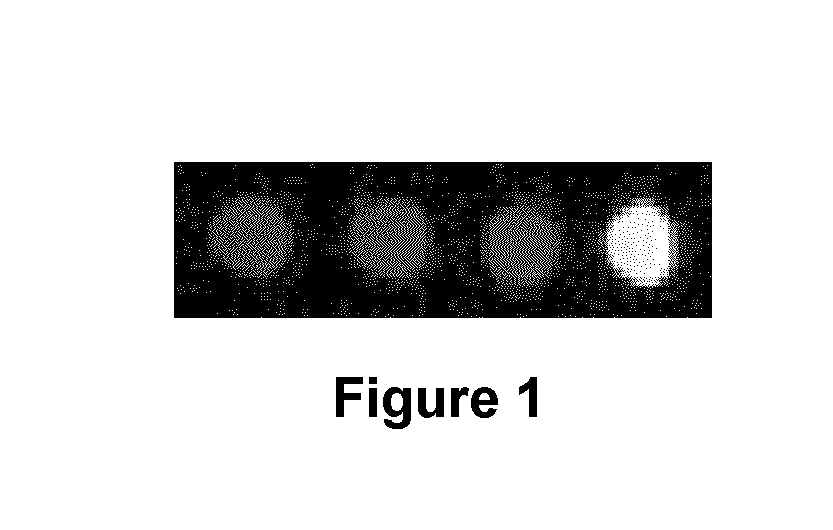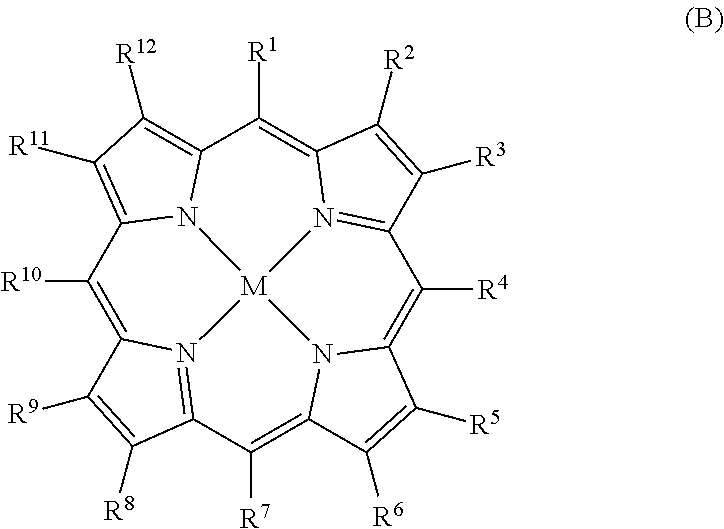MRI contrast agents for cell labeling
a contrast agent and cell technology, applied in the field of porphyrin compounds, can solve the problems of limited time window, low sensitivity, limited in terms of lack of anatomical information, etc., and achieve the effect of less prone to movement and less able to move across the cell membran
- Summary
- Abstract
- Description
- Claims
- Application Information
AI Technical Summary
Benefits of technology
Problems solved by technology
Method used
Image
Examples
examples of experimental procedures
[0113]All reagents and solvents were of commercial reagent grade and were used without further purification except where noted. All reactions were carried out with oven dried glassware, anhydrous solvents and under argon atmosphere unless stated otherwise. Column Chromatography was carried out using Caledon Silica Gel 60; 50-200 microns 70-300 mesh, or using Sephadex™ LH-20 with dry bead size of 18-111 □m from GE Health Care. Dialysis was performed with spectrumlabs Float-A-Lyzer™ G2 500 MWCO. Cation ion exchange was performed using an Amberlite® IR120, H resin. Phosphate Buffer Saline was purchased from Sigma® Life Science, sterile filtered and endotoxin tested. The cell line was obtained from ATCC (American Tissue Culture Collection Manassas, Va., USA). 1640-RPMI medium was purchased from Sigma-Aldrich, trypsin EDTA was purchased from Gibco (Carlsbad, Calif., USA). All the spectroscopy data for structural characterizations were obtained using the research facilities at University ...
PUM
 Login to View More
Login to View More Abstract
Description
Claims
Application Information
 Login to View More
Login to View More - R&D
- Intellectual Property
- Life Sciences
- Materials
- Tech Scout
- Unparalleled Data Quality
- Higher Quality Content
- 60% Fewer Hallucinations
Browse by: Latest US Patents, China's latest patents, Technical Efficacy Thesaurus, Application Domain, Technology Topic, Popular Technical Reports.
© 2025 PatSnap. All rights reserved.Legal|Privacy policy|Modern Slavery Act Transparency Statement|Sitemap|About US| Contact US: help@patsnap.com



